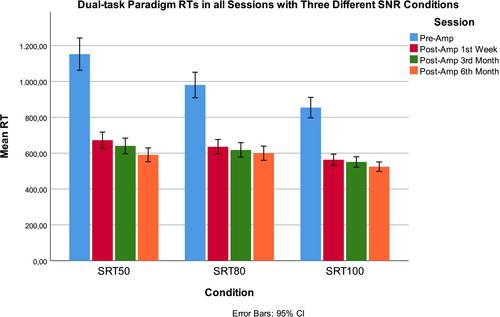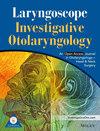Longitudinal Evaluation of Listening Effort and Speech Perception in Noise in CROS and BiCROS Hearing Aid Users With Single-Sided Deafness
Abstract
Purpose
The purpose of this study is to longitudinally investigate the effects of using CROS/BiCROS hearing aids on the listening effort and speech perception in noise skills of individuals with single-sided deafness (SSD).
Methods
Nineteen people with SSD who were going to use CROS/BiCROS hearing aids for the first time participated in the study. Participants were evaluated before they started using hearing aids and after 1 week, 3, and 6 months after they started using them. In every session, a dual-task paradigm was applied to measure listening effort, and the Turkish Matrix Test (TM) was applied to measure speech understanding performance in noise. The dual-task paradigm was evaluated at three different individual signal-to-noise ratios (SNR) determined according to the subjects' TM performance. Repeated measures ANOVA tests were used to evaluate whether the participants' dual-task paradigm and TM performances differed according to sessions.
Results
A significant difference was observed between both the dual-task paradigm and TM scores according to measurement time (p < 0.001). In pairwise comparisons with Bonferroni corrections, it was observed that there was a significant difference between all periods (p < 0.001). While the dual-task paradigm reaction times obtained in all three difficult listening conditions were highest before using the device, they were lowest at the sixth-month evaluation.
Conclusion
This is the first study to longitudinally examine how CROS/BiCROS hearing aid use affects both speech-in-noise ability and listening effort. As a result of this study, it was seen that the use of CROS/BiCROS increased speech understanding performance in noise and reduced listening effort after starting to use them. Furthermore, as the use of the device continued, it was observed that speech performance in noise increased and listening effort decreased over time.


 求助内容:
求助内容: 应助结果提醒方式:
应助结果提醒方式:


